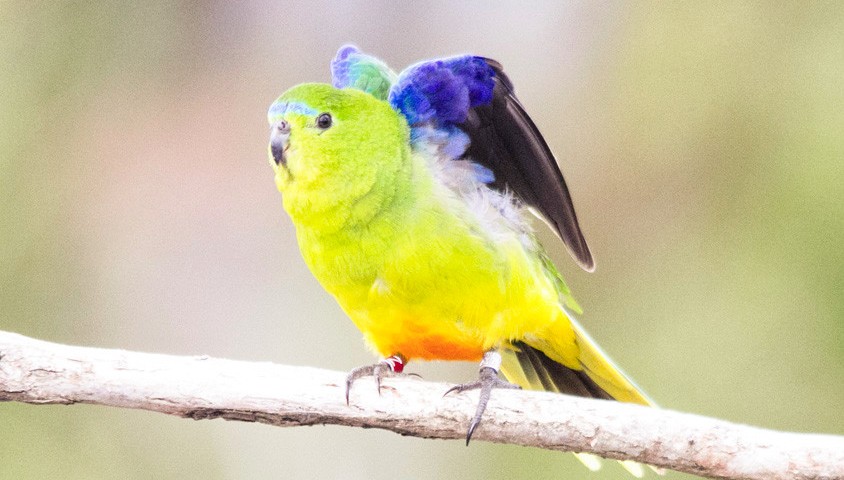The government has promised much-needed funding towards the ongoing survival of one of Australia’s most endangered species following an urgent meeting in Melbourne today.
The critically endangered orange-bellied parrot appeared to receive a significant boost late last year following a successful breeding season at the species’ traditional nesting grounds at Melaleuca, Tasmania, but any hopes of a fast recovery were soon dashed.
That generation of birds was estimated to number around 30 individuals (a large number considering current estimates of wild adults number around 50), but recent reports state that 19 of these have contracted Psittacine beak and feather disease – an ailment that is often fatal for juveniles.
Following the announcement of $525,000 recovery package, environment minister Greg Hunt told the ABC that the money is vital for the birds’ ongoing survival.
“What we want is an emergency work plan, which we will fund, to help remove predators and encouraged breeding programs,” he said.
“These funds will boost the Tasmanian government’s captive breeding and recovery program for the orange-bellied parrot and make sure we keep the parrot’s insurance population safe, as well as look after the wild population.”
A Long Road to Recovery
As zoologist Peter Menkhorst wrote in Wild issue 141, the orange-bellied parrot has been part of an intensive recovery program since the 70s that was revived in the 80s with the establishment of a captive population. Captive orange-bellied parrots now number in their hundreds, with both state-funded and private breeders working to establish a viable genetic pool from which to draw on.
Particularly worrying is Menkhorst’s insight into the particularly poor breeding performance of these birds over the past 20 years.
‘Drought between 1997 and 2010 is thought to have contributed to a decline in breeding participation…’ he wrote. If true then this may mean further setbacks should we be headed back into the El Niño phase of the Southern Oscillation, which BOM has recently indicated.
In 2006, the government put $3.2 million towards funding for the birds recovery, with other public fundraising also employed to help build nesting boxes and similar efforts.
Solving the Beak and Feather Conundrum
Psittacine beak and feather disease, also known as parrot beak and feather disease (PBFD) is a virus that all known parrots are susceptible to, however it appears the disease likely originated in Australia having been first reported here. Commonly, the disease causes the feathers and beaks of infected individuals to deteriorate and in fatal cases prevent the bird from feeding, flying or keeping itself warm.
With the latest outbreak of PBFD causing havoc for the orange-bellied parrot recovery, those working in this area are now in a position to reassess procedures in order to try and reduce the likelihood of another outbreak among future generations.
While this may sound like a large amount of effort, professor of Conservation and Sustainable Livelihoods at Charles Darwin University, Stephen Garnett believes that this also represents a true opportunity to promote Australian science.
Citing an example from New Zealand, Garnett recently wrote an article for The Conversation that advocates continued efforts into the parrot’s recovery regardless of ongoing setbacks.
‘Vaccines, screening procedures and improved husbandry techniques are also investments. Indeed they could generate financial returns if handled appropriately. New Zealand has successfully exported its pest-eradication services globally after trialling and refining techniques on its own rat-infested islands,’ he wrote.


